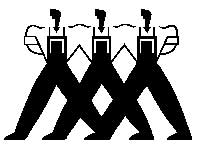Baffled by jargon from damp proofing companies?
Contact us if you need help with damp - 01626 872886 .
If you'd like to send us the details of your problem complete our Dampness questionnaire.
We are long term members of the PCA - The Property Care Association - the professional body for the Damp Proofing industry and our Dampness Surveyors have over 50 years of experience between them.
Want Help choosing a Contractor - E: Mail us at help@propertyrepairsystems.co.uk
Damp Related Definitions
Natural Rising Damp
Moisture in the ground that can rise into porous building materials unassisted by man made sources, (like water leaks) - a rare occurrence in properly constructed buildings however old. Very difficult to prove its presence in a building.
Man Made Rising Damp
Moisture added to the ground by water leaks and poor maintenance - the usual cause of dampness in buildings
Wicking
Moisture that is sucked up via an absorbent building material - skirting board wood, plaster, brick etc.
Penetrating Damp
Moisture coming from outside the building above ground - so not rising
Condensation
Moisture coming from the air in the building, so not rising or penetrating. Often associated with Mold growth.
Hydrostatic Damp
Pressure of below ground moisture, becomes higher as you go deeper
Damp Proof Course
A water proof material layer (Bitumen, slate or plastic) inside a wall designed to stop natural rising damp from reaching the wooden floor joists, wooden skirting boards and the wall plaster
Chemical Damp Proof Course
A water repellant layer inside a wall designed to 'control' natural rising damp from reaching the wooden floor joists, wooden skirting boards and the wall plaster - not as good as a Bitumen, Slate or Plastic layer.
Tanking
A waterproof liquid coating applied to walls and floors to form a complete 'tank' - in practice virtually impossible to achieve - largely replaced by Air Gap Membranes.
Air Gap Membranes
Dimpled plastic sheets designed to line (not Tank) a wall or floor, fixed using plastic plugs fitted with neck seals, designed to provide a barrier between wet, damp or salt contaminated walls and new insulation, plaster, plasterboard and decorations.
Property Care Association
We are long term members of the PCA - The Property Care Association - the professional body for the Damp Proofing industry and our Dampness Surveyors have over 50 years of experience between them.
If you prefer to use a Contractor, rather than our free advice service, then go to the PCA Website where you can find the nearest qualified specialist companies. They should give you the same information that we provide. If in doubt E Mail their Reports to us for checking, before spending any money.
Link for the PCA - click here.
Want Help choosing a Contractor - E: Mail us at help@propertyrepairsystems.co.uk
Index Page | Privacy Policy | Returns Policy | Contact | Links | Technical References
OUR SHOPPING PAGES
- DAMP SHOP - this Site, for Damp problem solving in buildings
- TANKING SHOP - this Site, for Damp problems below ground level
- MOLD SHOP - this Site, for Mold problems and their solutions
- SURVEYING TOOLS SHOP - this Site, for tools for surveying your building for damp
- DAMP PROOFING EQUIPMENT SHOP - pumps, injection rods, spray lances
Property Repair Systems
T: 01626 872886
E: Mail us help@propertyrepairsystems.co.uk
Site written by: David Moore
David Moore, B.A. (Hons.), C.T.I.S., C.R.D.S. Technical Author
Google+
Other Property Repair Systems Sites:
www.boron.org.uk - how to use Boron based insecticides/fungicides to treat timber rots and insect attack
www.deck-treatment.co.uk - how to treat patio decks and yacht decks
www.dryrot.biz - how to kill Dry Rot in buildings
www.drywallandfloor.co.uk - membranes for lining damp walls, floors, basements and cellars
www.epoxy-info.co.uk - resins for repairing and sealing all types of masonry
www.fire-door-paint.co.uk - upgrade doors to 30 minutes fire resistance
www.joist-repair.co.uk - how to quickly repair joists and beams of any size
www.propertyrepairsystems.co.uk - our Home Site
www.steel-fire-paint.co.uk - treat steel with Intumescent Paint to provide fire protection
www.timber.org.uk - systems of repair, with step by step methods
www.timber-repair.co.uk - how to repair timber beams
www.woodworm-info.co.uk - how to kill and prevent woodworm and death watch beetle
www.woodworm-expert-advice-forum.org.uk - all your questions and our answers about woodworm treatment DIY
